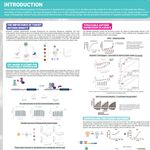Research Scientist, Kroemer Lab, Paris, France
BIOGRAPHY

SEP 15, 2015 7:00 AM PDT
WEBINAR: Less False Negatives: Quantifying Cell Viability by Simultaneous Triple Staining
Presented at:
Beckman Coulter Life Sciences Virtual Trade Show
Speakers
-
Allan Sauvat
Research Engineer, Institut Gustave Roussy, Villejuif, France, Kroemer Lab, Paris, FranceBIOGRAPHY
Abstract
Cellular viability is usually determined by measuring the capacity of cells to exclude vital dyes such as 4',6-diamidino-2-phenylindole (DAPI), or by assessing nuclear morphology with chromatinophilic plasma membrane-permeant dyes, such as Hoechst 33342. However, a fraction of cells that exclude DAPI or exhibit normal nuclear morphology have already lost mitochondrial functions and/or manifest massive activation of apoptotic caspases, and hence are irremediably committed to death. Here, we developed a protocol for the simultaneous detection of plasma membrane integrity (based on DAPI) or nuclear morphology (based on Hoechst 33342), mitochondrial functions (based on the mitochondrial transmembrane potential probe DiOC6(3)) and caspase activation (based on YO-PRO®-3, which can enter cells exclusively upon the caspase-mediated activation of pannexin 1 channels). This method, which allows for the precise quantification of dead, dying and healthy cells, can be implemented on epifluorescence microscopy or flow cytometry platforms and is compatible with a robotized, high-throughput workflow.
Learning Objectives:
Learning Objectives:
- Learn about the protocol developed for the simultaneous detection of plasma membrane integrity (based on DAPI) or nuclear morphology (based on Hoechst 33342), mitochondrial functions (based on the mitochondrial transmembrane potential probe DiOC6(3)) and caspase activation (based on YO-PRO®-3, which can enter cells exclusively upon the caspase-mediated activation of pannexin 1 channels)
- Learn how this method, which allows for the precise quantification of dead, dying and healthy cells, can be implemented on epifluorescence microscopy or flow cytometry platforms and is compatible with a robotized, high-throughput workflow
You May Also Like
APR 02, 2025 | 11:00 AM
Join this year's poster presenters in the Poster Hall during the Poster Networking Hour, Wednesday, September 20th, from 10:00 AM –11:00 AM PDT , to chat live about their posters a...
APR 21, 2025 | 1:00 PM
C.E. CREDITS
Routine coagulation assays are widely performed in laboratories and provide valuable information to the patient’s overall clinical picture. It’s important for laboratorians to kn...
Speaker:
Malissa S Norfolk, MBA, PMP, MLS(ASCP)ᶜᵐSHᶜᵐ
MAR 19, 2025 | 11:30 AM
Join this year's poster presenters in the Poster Hall during the Poster Networking Hour, Wednesday, March 5th, from 10:00 –11:00 AM PDT , to chat...
FEB 25, 2025 | 1:00 PM
C.E. CREDITS
Quality efforts in the clinical laboratory are always under the microscope- a hyper-focus for laboratorians from start to finish. Recognizing the external factors that affect hemostasis test...
Speaker:
Rae Kerlin, BS, MLS (ASCP), NCA
DEC 10, 2024 | 9:00 AM
To-date, proteomic analysis has been severely limited in scale and resolution. Analyzing protein samples using an intact, single-molecule approach holds th...
Loading Comments...
Please update your information
Certificate of Attendance
Thank you for choosing Labroots. Please note that a Certificate of Attendance does NOT count towards Continuing Education Credits.
DOWNLOAD CERTIFICATE
DOWNLOAD CERTIFICATE
You must watch the entire webinar to receive your certificate of attendance.
You must attend the event before receiving your certificate of attendance.
You must register for the event first.
Certificate is no longer available for this event.
You must be logged in to retrieve your certificate.





